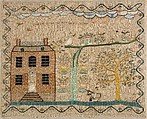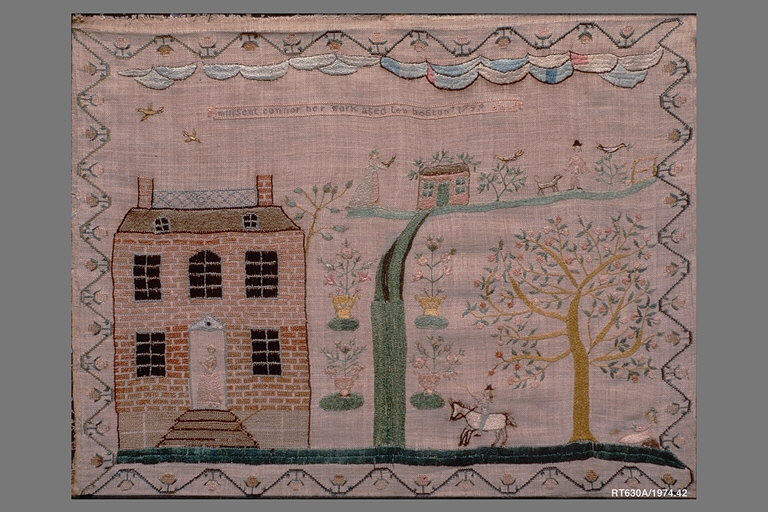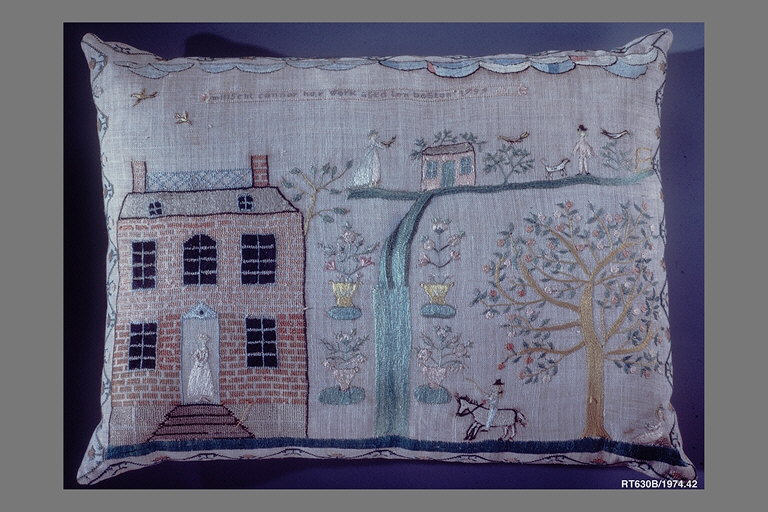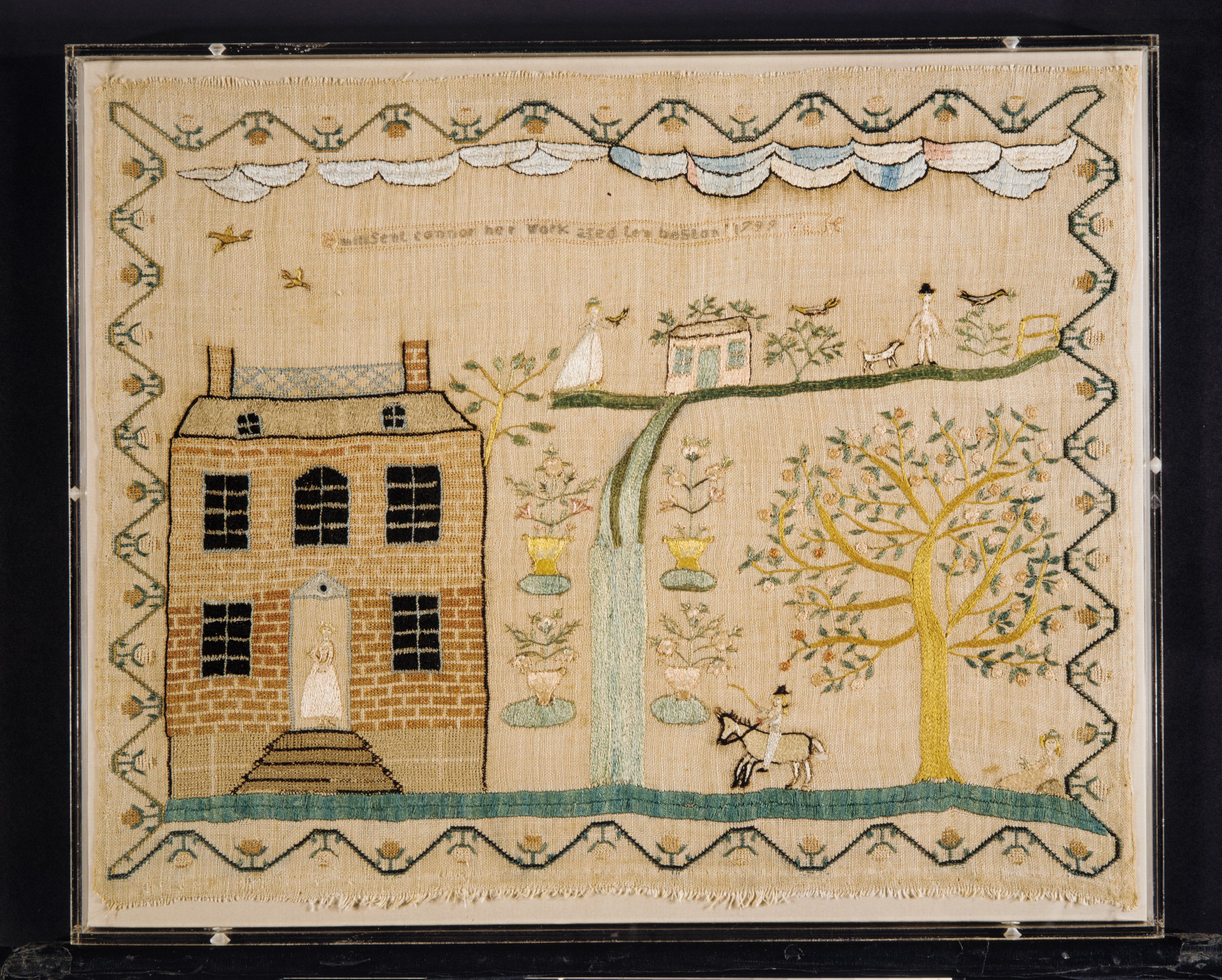Sampler
Millsent Connor American
Not on view
Millsent Connor’s sampler belongs to a small group of Boston samplers characterized by a line of stylized blue and white clouds along the top of the two-tiered central design (see also sampler 1971.180.131). In her unique rendering, the upper portion features a naively stitched one-story cottage on a country lane; and in the lower portion is a large-scale three-bay brick Federal house and garden. The two houses are connected by a long green vertical road that defies conventional perspective and represents the journey from country to city. In the pedimented doorway of the red-brick house, a female stands greeting a male visitor arriving on horseback. With its double chimneys, central arched window, hipped roof, mullioned windows, and raised basement—the house is an example of Boston’s newly popular Federal era architecture.
Millsent completed her sampler three years after the Boston architect, Charles Bulfinch (1763-1844), designed the Harrison Gray Otis’s mansion in Boston’s West End. The house she stitched shares enough characteristics of the Otis house to suggest that it, or another recently built home, inspired her design. Charles Bulfinch was the first American-born architect, and his private residences, as well as the grand Massachusetts Statehouse (1798), would have been familiar to Bostonians during the last decade of the nineteenth century.
Born in 1789, the year George Washington became president of the United States, Millsent was part of the first generation of women to grow up in the New Republic. Although nothing is known about her life, Millsent’s sampler must have been valued, carefully handed down and preserved so that in the mid-twentieth century its pleasing composition and freedom of form caught the attention of pioneering Americana collectors, Edgar William Garbisch (1899-1979) and his wife Bernice Chrysler Garbisch (1907-1979), who donated the sampler to The Met in 1974.
Due to rights restrictions, this image cannot be enlarged, viewed at full screen, or downloaded.
This artwork is meant to be viewed from right to left. Scroll left to view more.







